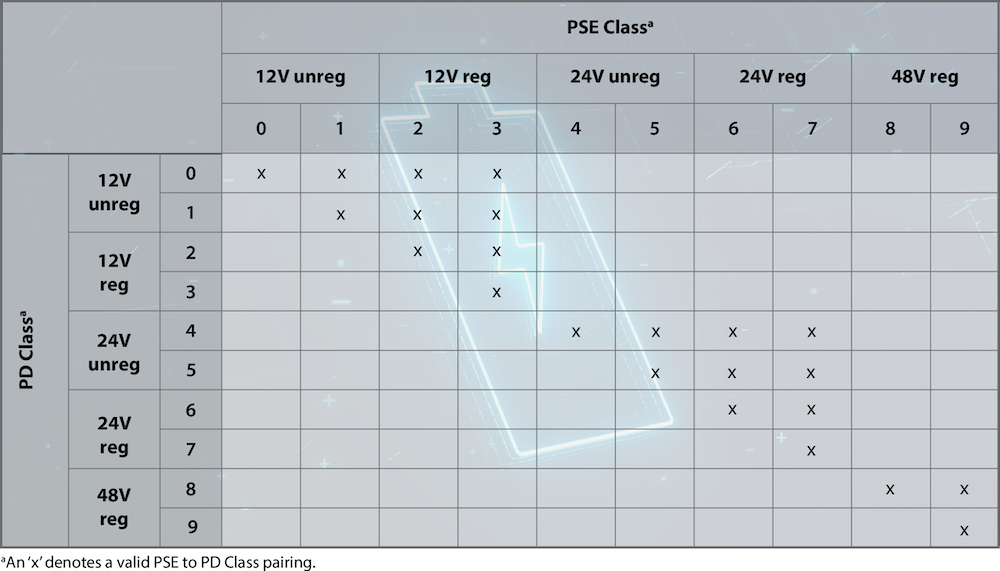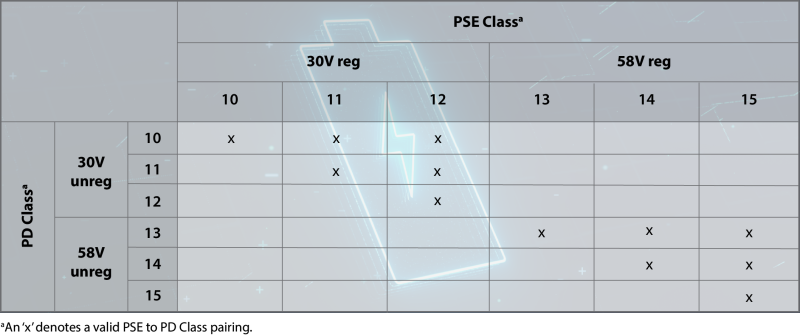Don't forget to watch the 'Demystifying the Powers of Single-Pair Ethernet' webinar. Click here.
10 years ago, in IEEE 802.3, a working group of standard specifications for Ethernet, issued a Call for Interest or CFI to propose a new Ethernet powering solution called “Power over Data Lines” (PoDL). This new standard was designed to improve upon 1000BASE-T1, another Ethernet standard that had just been introduced, which offered gigabit speeds over a single copper twisted pair, instead of the typical four-pair category cabling used in previous Ethernet standards.
PoDL and 1000BASE-T1 both benefit the automotive industry, which is concerned with weight and efficiency. Cabling harnesses could be simplified and lightened by switching to standardized Ethernet data technology rather than decades-old legacy standards. Similarly to the four-pair Power over Ethernet (PoE) standards developed in 802.3, PoDL could afford additional cost savings and efficiencies by providing a method to power single pair ethernet end devices simultaneously over the same data cabling at lengths up to 15 meters.
This project, titled 802.3bu, would take another 3 years to complete, becoming the 104th Clause in the 802.3 Standard. Additional Ethernet data standards added 100 mbps speeds to the initial 1000BASE-T1 project, which again added flexibility and potential cost savings to a market that did not require high data rates for all links.
Unlike previous 802.3 PoE standards for four-pair category cabling, PoDL was not designed for interoperability across all possible defined power classes, as it was built to meet the needs of the automotive market, which required greater flexibility of powering voltage classes.
Original 10 PoDL power classes (0-9):

Interoperability matrix for original 10 PoDL power classes (0-9)

The benefits of Single Pair Ethernet standards, originally intended for the automotive industry, began to become apparent in other technology spaces during and after the development of these projects. In the Industrial and factory automation Industry, which was heavily reliant on obsolete data and powering specifications, the story is similar to that of the automotive Industry. The data and powering solutions offered by Single Pair Ethernet could be advanced and interoperable, but the needs were different from those of 100T1, 1000T1, and PoDL, specifically where it concerned the distance of links.
In response to this need, a new project, 802.3cg, was started to define a lower speed of 10mbps but over very long links up to 1000 meters. This project was also tasked with amending Clause 104 to add additional power classes for these 10BASE-T1 links. It did so by defining the operation of 6 new power classes.
New 6 SPoE power classes (10-15):

Interoperability matrix for the new 6 SPoE power classes (10-15):

These new power classes, while also housed in the same Ethernet clause and standard, have significant differences from the original 10 defined and became known in the larger industry as Single Pair Power over Ethernet or SPoE.
The implementation of Power over Data Lines (PoDL) in the market has been slow so far. This is not surprising, as the automotive industry has significantly long development cycles to ensure the safety of new vehicles. This has posed a challenge for developing conformance tests, as real-world implementations are crucial to verify conformance to 802.3 Ethernet Clauses. Comparatively, the industrial market has been quicker to adopt these long reach data and powering specifications, with development kits now available.
